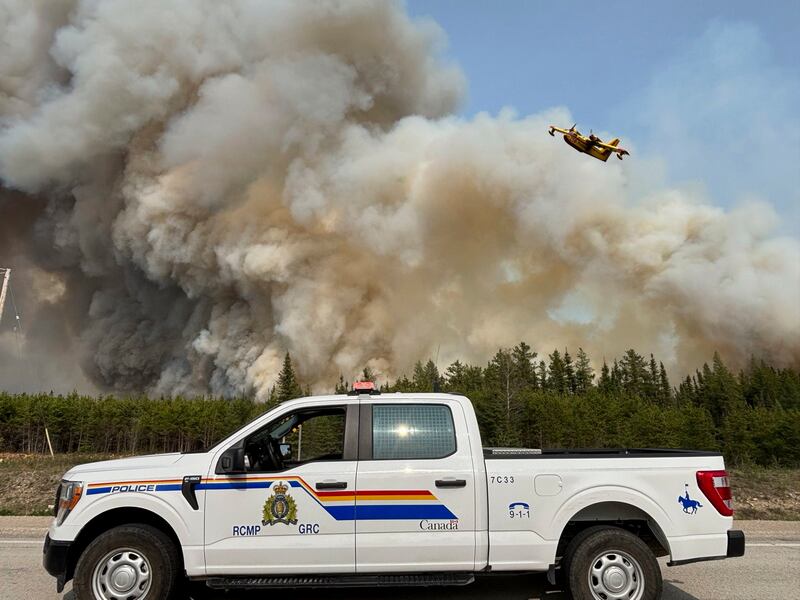Wildfires in Canada are causing air quality issues in the Midwest - Deseret News
Caitlin is a general assignment reporter with the Politics and the West team. She covers politics, breaking news and other topics.
Dozens of wildfires in the Canadian provinces of Saskatchewan and Manitoba have spread out of control this week, displacing residents and causing smoke that has made its way into the American Midwest.
Wildfire season in Canada typically runs from March to October, and fire activity in western Canada usually has an uptick in May, according to The New York Times. The season is already off to a grim start after a wildfire in Manitoba killed two people and forced the evacuation of an entire town earlier in May.
Canada’s fire season is earlier than Utah’s, which is typically from July to October.
The smoke from the fires has been dragged by a cold front into states such as Minnesota, Wisconsin and Michigan.
A cold front has pushed the smoke from the Canadian fires across the border into Minnesota’s northern region and tribal nations, according to The New York Times. This has generated a reading of red on the air quality index, used by states to track particle pollution.
A red reading means it is unhealthy for many people in the general public.
Air quality alerts have also been issued across the entire state of Wisconsin and the Upper Peninsula of Michigan, according to The Weather Channel.
The smoke that is blowing into these areas is near-surface smoke, which can be unhealthy to breathe since it is at lower levels.
Meteorologists in Michigan’s Department of Environment, Great Lakes and Energy said that the levels of fine particulate in the air would be elevated in the state into Saturday.
Those in sensitive groups who may be more susceptible to smoke were advised to take precautions, including adjusting outdoor activity, The New York Times reported. These groups include those with heart or lung disease, older adults, children, pregnant people and outdoor workers.
As the fires burn in Canada’s prairies in Manitoba and Saskatchewan, the two neighboring provinces have declared states of emergency.

The premier of Saskatchewan, Scott Moe, issued the emergency order on Thursday, following Wab Kinew of Manitoba who did the same on Wednesday, per The New York Times.
Across northern Saskatchewan, a rural region housing several Indigenous reserves, 15 communities have been evacuated.
The emergency orders will last for at least 30 days, enabling public safety officials to mobilize resources quickly and get help from other provinces. Firefighting crews from British Columbia and Nova Scotia are already at work in Saskatchewan.
Around 17,000 residents of Manitoba are under evacuation orders as fires burn in the north and east areas of the province, per The New York Times.
Throughout the weekend, the greatest concentrations of smoke will be in the Midwest and northern Plains; as winds continue to blow, lesser concentrations will move into the South and East.
Weather patterns will change Monday into Tuesday, turning winds out of the South and central U.S. ahead of a cold front from the West.
Wildfire seasons across the country, including Utah’s, are increasing in length, per Axios. These increases are straining fire departments and other organizations that control and contain wildfires.
Between 1973 and 2024, the number of “fire weather” days along most of the Wasatch Front rose by 12 to 15 days, according to an analysis from Climate Central.
In western Utah, fire weather days have increased by 34.
A “fire weather day” is defined as “one with temperatures of at least 45°-55°F (depending on the season), relative humidity within 5% of regional thresholds, and sustained wind speeds of 15mph or more — all happening together during at least two hourly measurements on a given day," according to Axios.











